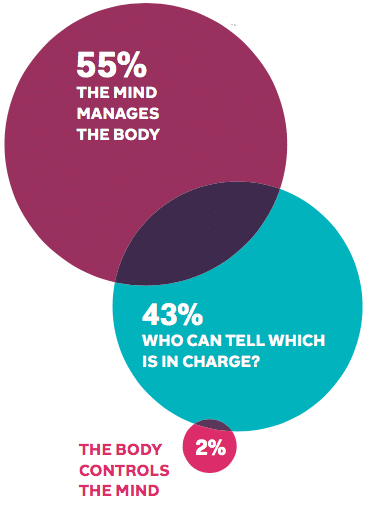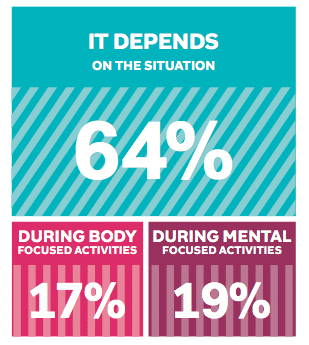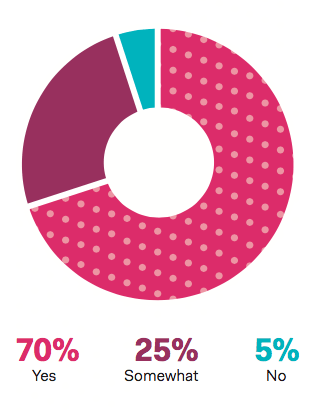How to Lead Yourself, Your People, and Your Organization for Extraordinary Results
Rasmus Hougaard and Jacqueline Carter (Harvard Business Review Press)
For years, Rasmus Hougaard and Jacqueline Carter have been tirelessly promoting mind training as the secret sauce for those who want to lead people in the pursuit of big aims. All great aims, be they commercial or societal, require great leadership, and The Potential Project, a global leadership and corporate training group, tries to foster better leadership through mindfulness. Hougaard is its founder and managing director, and Carter its North American director. They teamed up on a first book in 2015, One Second Ahead, which focused on how a culture that equates moving fast with productivity can cripple our brains and hamper creativity and genuine productivity.
This second book lays out succinctly and in clear language a three-part approach to leadership, as indicated in the subtitle: yourself, other people, the organization as a whole. The book begins with some core principles, such as that the most vital element to manage is attention, and proceeds to dissecting the anatomy of our daily habits, including how our focus fluctuates and why it helps to understand these diurnal rhythms. The book goes on to give compelling advice in short sections bolstered by illustrations and examples from people the authors have worked with. For instance, they expand on the motto “give credit, take blame” with a short story of how a partner at an accounting firm was able to help an employee rectify a BIG mistake with a client (to the client’s satisfaction) without having to bite the employee’s head o or even speak harshly to them. Books like this should be required reading in business schools everywhere.
How to Give and Receive Joy Every Day of Your Life
M.J. Ryan and Mark Nepo (Conari Press)
As most of us have heard by now, gratitude is a free, immediate, yet quickly forgotten way to feel happier. This book, belying the cutesiness of its title, offers considerable wisdom on that most underrated superpower. The plural attitudes captures the deeper understanding of gratitude that runs throughout: Being thankful, Ryan counsels, fits perfectly wherever you find yourself. She brings in a mish-mash of anecdotes, teachings, and quotations— some of them spiritual, some scientific, and others that land in a weird gray area (do bacteria actually grow better when you pray for them?). No matter your perspective on life in this moment, the gentle compassion of this book offers many ways to make the view a little brighter.
Marjorie A. Silver (Carolina Academic Press)
Few would think of law as a “healing profession,” but Marjorie Silver—a law professor at the Touro College Law Center in Central Islip, New York—does. In fact, she wrote the book on it: The Affective Assistance of Counsel: Law as a Healing Profession. In this follow-up book, she and 15 other legal minds explore more compassionate ways to resolve disputes and achieve justice. It looks at changes we can make in our courtrooms, classrooms, and communities to bring our justice systems more in line with deeply held values. An essay by Rhonda Magee considers how mindfulness-based “learning communities” can be an incubator for new ways of practicing law.
Meditation for Your Twenties and Beyond
Yael Shy (Parallax Press)
“Young people in their twenties and thirties are rapidly becoming the ‘meditation generation,’” writes Yael Shy. As the main mind behind MindfulNYU—the country’s largest campus-wide meditation program—and as someone who began meditating in college to assuage her crippling anxiety, Shy is well qualified to recommend the practice. This is particularly true if you’ve felt like mindfulness or meditation are out of touch with the instability and unrelenting freakiness of the challenges that young people have to navigate. What Now? offers her steady, compassionate advice on tech–life balance, mindfulness in relationships, social justice, mental health, and more. Shy’s set of meditative exercises at the end ties it all together, so that you can start right now.
A Real-Life Guide to Stepping Back, Slowing Down, and Creating a Simpler, Joy-Filled Life
Rachel Jonat (Simon & Schuster)
Rachel Jonat, who also blogs on minimalism and parenting, takes a stand against the assumed virtuousness of a maxed-out schedule when she encourages us to “create time and space for that most luxurious of activities: doing nothing.” Just like having less stuff lets you enjoy the stuff you have more, she writes, making time to zone out enables you to be more fully present, for yourself and loved ones. Sound familiar? For context, experienced practitioners say being mindful eventually becomes effortless. So will practiced effortlessness also make you mindful?
A Year Inside the Optimization Movement
Carl Cederström and André Spicer (OR Books)
Back in the day, engineers at Toyota invented a manufacturing and teamwork methodology called kaizen, which is still popular today. It’s often translated as “continuous improvement,” which would lead you to believe that it would be just perfect for the self- improvement, optimization, and life-hacking movement currently sweeping the planet. There’s only one hitch, though. One of kaizen’s guiding principles is sufficiency, making do with what you’ve got, adding as little as possible, and using imagination to let simple solutions emerge. The optimization movement seems generally to be driven by the opposite notion: insufficiency. You are never enough. There is never enough. There’s something wrong with you, and you’ve got to fix it. And when you’re done with that, find something else to fix. It’s not based on teamwork, either. It’s individualistic and even narcissistic at times: What the world needs now is a better me.
Carl Cederström, a professor of organization studies at the Stockholm Business School, and André Spicer, an organizational behavior professor at the Cass Business School, City University of London, first teamed up to write their 2015 book, The Wellness Syndrome, which expanded on this very point. In the unending pursuit of the holy grail of “wellness,” it’s easy to detach from seeking solutions together with others and retreat into a moralistic, blaming culture where the greatest sin is to not take perfect care of yourself. They’re not suggesting we stop eating our vegetables and exercising and just let ourselves go. They are suggesting that we let go of the obsession and the fault-finding, though, and start focusing on community more. After all, the planet is crying out for group solutions.
In Desperately Seeking Self-Improvement, which serves as a kind of sequel, the two professors decide to research the phenomenon more deeply by making themselves the guinea pigs for all manner of optimization schemes, including electric-shocking to improve concentration, meditation-improving headbands, memory- boosting regimens, plastic surgery, and master cleansing, to name just a few. The book is a satirical take on the same territory covered in their first book, but this book, which chronicles their improvement schemes in daily journals running in parallel, leads them to some very funny—and also very painful and even a little disturbing—places. Do not try this at home.
A Memoir of Addiction and Redemption Through Wellness
Quentin Vennie and Jon Sternfeld (Rodale Books)
Quentin Vennie’s memoir does many things. It recalls a life wrenched by generational pain, fear, and self-doubt. It evokes being poor and black in Baltimore, and the instability and discrimination that plague poverty and blackness. And it especially captures the nightmare of addictions, some of them medically sanctioned.
Yet it also affirms how Vennie—aided by his wife, Nicole, and their son, Jayden— fights the odds to find healing. Green juice, yoga, and meditation become his “wellness trio,” the path he advises for vibrant living. “Your reaction to the pain will not change the fact that it exists,” he writes, “but it will change the impact that it has in your life.”
Thich Nhat Hanh (Parallax Press)
No matter how regularly we practice mindfulness, we’re bound to lose our cool once in a while. Nobody’s perfectly calm and collected all the time—that’s not what being human is all about. The human experience is rife with emotions, which can be rather messy but can also open up opportunities to cultivate compassion.
Thich Nhat Hanh’s concise, beautifully illustrated book contains straightforward insights for how to work with conflicts in a more compassionate, openhearted way. Each page stands alone, so the reader need only flip to a random page to access a little snippet of wisdom. This book probably won’t prevent the occasional emotional outburst or defensive reaction, but it may make those moments more manageable—and even fruitful.
An Immersive Experience
Rob DeSalle (Yale University Press)
Since forever, philosophers and ordinary people alike have been wondering how it is we come to know something, since whatever we experience seems to come to us through the gateways we call “the senses.” Our sense organs—noses, ears, eyes, tongues, skin—are pretty bizarre-looking objects, which is why sci-fi cartoonists have such fun reshaping them to create alien life-forms. Without these receptors, the world is just a chaotic blizzard of events. Our senses give them form and significance and enable us to make our way around without doing serious damage (usually). But as Rob DeSalle—curator at New York’s famous American Museum of Natural History—makes clear in this wonderfully detailed account, we’re not all sharing the same exact world. Ever known someone who can’t stand cilantro (maybe that’s you)? They may be a “supertaster,” which means they experience an overwhelming bitterness, where you’re tasting pure joy. (DeSalle shares a theory that some great chefs are supertasters who use their highly attuned taste buds to create great dishes that may not actually taste all that good to them!)
He explores each of the main senses in intricate detail, but does not limit himself to “the big five.” Defining what is and isn’t a sense is tricky, he admits, and he steers clear of enumerating the 33 discrete senses that some researchers have posited, but he does focus on a few that he feels are critical to add: balance, pain (nociception), and hot-cold sensing. He also touches on proprioception (knowing where our body is in space) and sensing time of day. It’s key, though, to understand, he points out, that senses perform in concert, not as independent operators. They’re orchestral players, not soloists.
This book is, as the title suggests, an immersive sensory experience. Anatomical illustration is a high art, and it’s put to wonderful use here. In fine line drawings and diagrams, DeSalle paints for us a world that is an interplay between the structures within our bodies and thingies “out there,” such as “musk molecules,” resulting in our intimate connection with everything around us. The treatment of the senses is not limited to humans, but also explores how other organisms sense and make sense of the environment. It’s also not limited to ordinary experience, delving into hallucination, strokes, and other alterations to the standard sensory repertoire. This is a big book worth feasting on.
Three Podcasts on Rethinking How we Think
DESIGN MATTERS WITH DEBBIE MILLMAN
Episode: Tim Ferriss
His 4-hour-everything followers may be surprised to hear Tim Ferriss open up about his experience with depression and suicidal ideation while still a postgrad at Princeton University. But, just as with the more hackable areas of life, Ferriss has a straight-up view of exactly what the struggle is: “It’s very difficult to think your way out of things that you didn’t logically think your way into.” He shares some of his favorite ways to stay well, including: “curating” his social circle, a writing exercise for overcoming fears, and working out really, really hard. Another of his keys to maintain recovery? Daily meditation, as an opportunity for “observing your thoughts without getting tumbled by them.”
Q
Episode: How Sarah Slean’s musical and philosophical evolution led her to Metaphysics
Canadian singer-songwriter Sarah Slean shares how she was practicing meditation one night while riding the subway home, when she felt a “very menacing presence” beside her: “This terrifying- looking human being with this harsh look in his eyes, like he was going to hurt me and enjoy it.” Instead of reacting to a natural spike of anxiety, Slean struck up a friendly conversation. Gradually, the stranger opened up to her about his hardships. Their brief chat ended in exchanging email addresses; years later, Slean would write a song (on her newest album, Metaphysics) that reflects the profound effect each had on the other.
FREAKONOMICS RADIO
Episode: Why Is My Life So Hard?
Psychology professors Tom Gilovich, of Cornell University, and Shai Davidai, of The New School for Social Research, here investigate humankind’s pessimistic tendencies: Why do we often think we have it worse in life than anyone else? And why is it so hard to practice gratitude consistently? Their “headwinds/tailwinds asymmetry” theory says we are biased to underestimate what helps and overestimate what hinders us. If we can learn to notice “the invisibles,” taken-for-granted things that boost spirits—like having coffee with a friend—we’ll feel happier, longer.
This article appeared in the April 2018 issue of Mindful magazine.
6 Books to Get You Unhooked from Negative Habits
The Top 10 Mindful Books from 2016
The post Cultivate a Mindful Attitude with These New Books and Podcasts appeared first on Mindful.
from RSSMix.com Mix ID 8196908 https://www.mindful.org/cultivate-mindful-attitude-new-books-podcasts/



